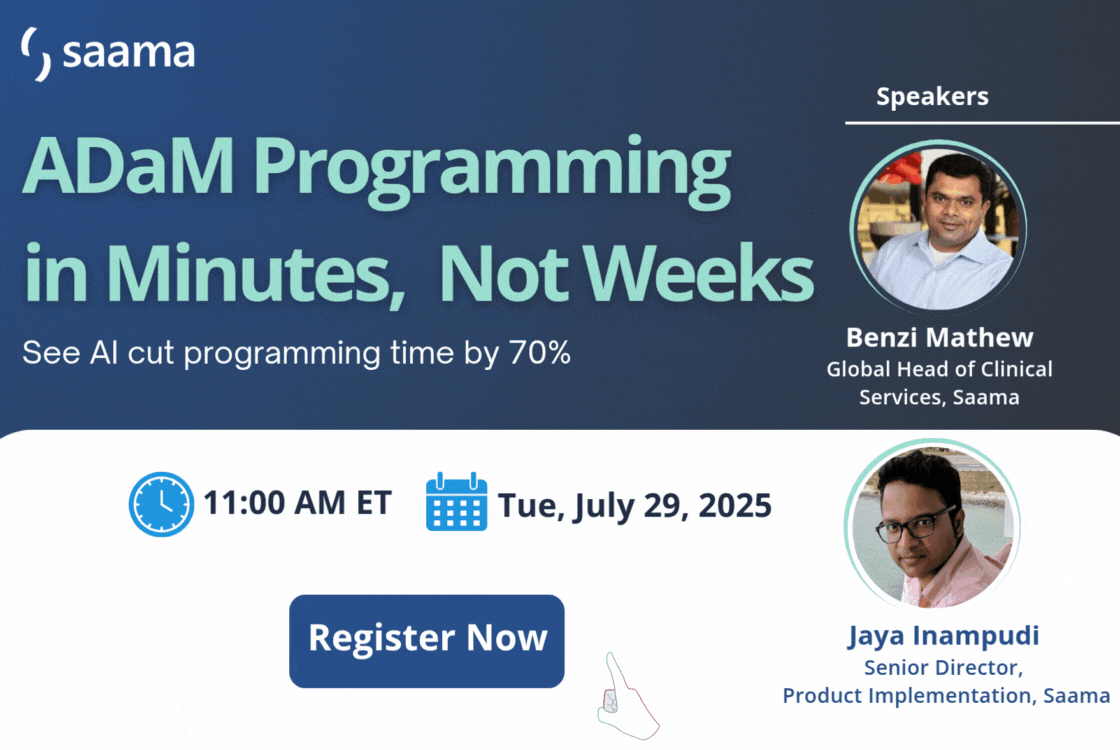Artificial Intelligence (AI) is the hot topic of pretty much every discussion surrounding innovation and digital transformation across industries, ranging from how it can help businesses transform, enhance processes, and improve output and performance. Clinical development is no exception and there’s a lot of buzz and excitement around the potential that AI and Machine Learning (ML) have to move the industry forward.
But what does it really mean? How can life science organizations harness the capabilities of AI in an effective, impactful manner in an industry as regulated as clinical development? Beyond asking ChatGPT a question about clinical trials, how can businesses bring the benefits of AI technology into their daily workflows and on-the-ground operations to accelerate development of life changing therapies and treatments?
The role of AI in Decision Intelligence
Decision intelligence is the application of AI and machine learning technologies, along with data and other support tools, to augment and improve decision-making within a field.
Within clinical development, we’ll take a closer look at three different levels of Decision Intelligence that use AI: support, augmentation, and automation.
Support
Support consists of the use of AI and analytics tools to present data, visualizations, and representations to an end user to aid in their decision-making. In this model, the analytics tools are a support system for the user that brings them insight and information – but what they should do about it still rests with the end user. Humans make all decisions at this level.
Augmentation
At the augmentation level, AI and ML don’t just represent data to the end user, they also present interpretations of that data and generate recommended actions for them to take. The machine predicts what the user will likely want to do with the data based on historical trends and patterns.
It’s important to note here, though, that the final decision and action taken still lies with the end user. The machine will make a recommendation but the user still brings their knowledge and experience to confirm the machine’s suggestions or adjust how to proceed. All human feedback is incorporated into the machine to refine future performances.
Automation
The third level, automation, consists of autonomous decision-making conducted by AI and analytics tools. In it, AI or ML-driven analytics does the bulk of data processing, analysis, and evaluation and arrives at decisions independently. Given the highly regulated nature of clinical research and development, this area is unlikely to be utilized in most (if any) applications.
While we will continue to monitor progress and regulatory developments in this area, we at Saama firmly believe that a human in the loop will always be critical and necessary for any action-oriented decisions taken.
Practical AI applications in clinical development
Let’s take a look at how AI and Decision Intelligence are being utilized in practical ways within clinical development.
Pattern and trend identification
We know that traditional AI and ML models can be trained to analyze historical data to identify and understand trends and patterns. This makes AI and ML especially useful in tasks like:
- identifying duplicate lab tests.
- Finding and surfacing missing data in aggregated clinical datasets.
- Looking for medication discrepancies.
- Identifying adverse events (AE) overlaps.
These, of course, are all things that a human can do, but AI and ML are incredibly efficient at performing these tasks and can do them at a faster rate than humans.
Patient behavior prediction
Building on this idea that AI and ML can be used to identify patterns within data, AI and ML algorithms can help to support the workflows of MedicalReviewers. Looking at trends in patient demographics, concomitant medications, dose responses, lab values, and so on, AI and ML can help to flag and draw attention to things like:
- Screen failures
- Potential early withdrawals
- Non-serious adverse events
- Serious adverse events
AI can suggest cohorts of patients for review and attention and then direct a Medical Reviewer to suggested areas of focus.
New data generation
AI’s potential isn’t just limited to analysis and prediction, it can also be harnessed to generate new data, code, listings, and more.. We call this type of AI Generative AI or GenAI. It’s an extension of natural language processing (NLP) that allows an AI algorithm to produce new text in response to a prompt. In many applications, this can look like a dialogue between a person and a computer.
In clinical development, we can use this same “question and answer” or “prompt and response” GenAI capabilities to generate interesting, relevant outputs that enhance and further workflows and support key personas, like Data Managers and Medical Reviewers.
For example, a Data Manager could ask an AI tool in natural language for a specific description of a list of patients taking a certain concomitant medication who have completed a particular visit. In response, the system can generate the code necessary behind the scenes to produce that listing. That being said, the review and action process remains the same – the Data Manager is still able to interrogate that listing and make the final decision on the next steps to take.
Analyzing prompt and data inputs, GenAI can be used to generate:
- Data listings
- Tables and graphs
- Code for quality data checks
- Simulated test data
- Other data types
In summary: AI in clinical development
We believe that AI should be used to facilitate rational, effective decision-making, driven by data and empowering the end user. But, this doesn’t discount or erase human-centered experience and expertise. Bad or biased data inputs, and poorly trained or poorly designed algorithms all can lead to recommendations that do not improve our understanding of a trial or its participants.
A critical safeguard in preventing these biases from slipping through the cracks and impacting data quality is keeping a human in the loop at all times, as well as the solidified expertise of the provider of the AI solution.
Conclusion
AI and ML are, at the end of the day, tools that can aid clinical trial professionals in their responsibilities. But, like any tool, they need to be built well and used with informed intent.
At Saama, we provide AI-powered solutions that augment and enhance clinical development. If you’d like to see how our proprietary suite of AI solutions can integrate into your workflows and operations, book a demo with us and we’ll show you the benefits.

